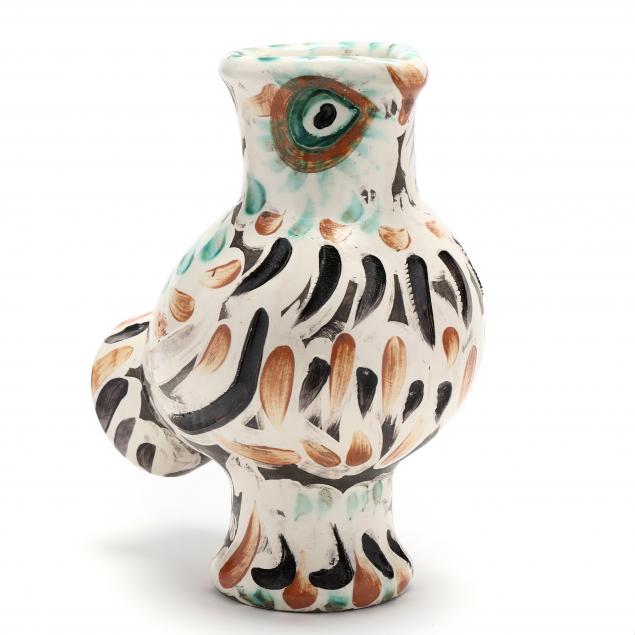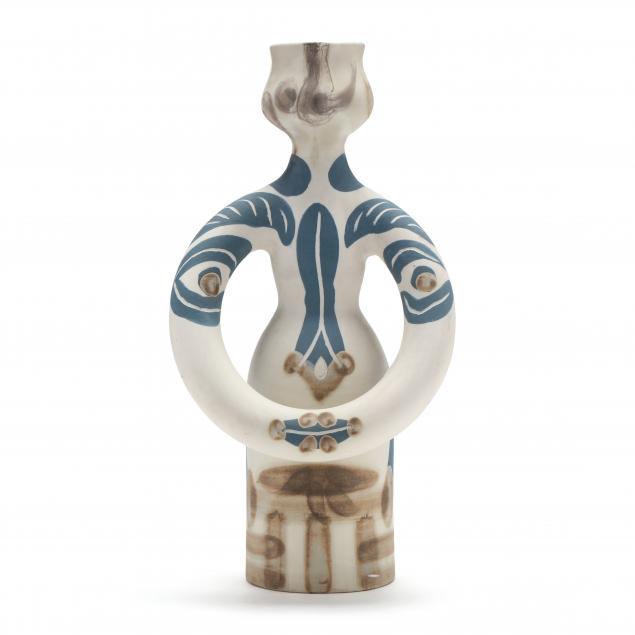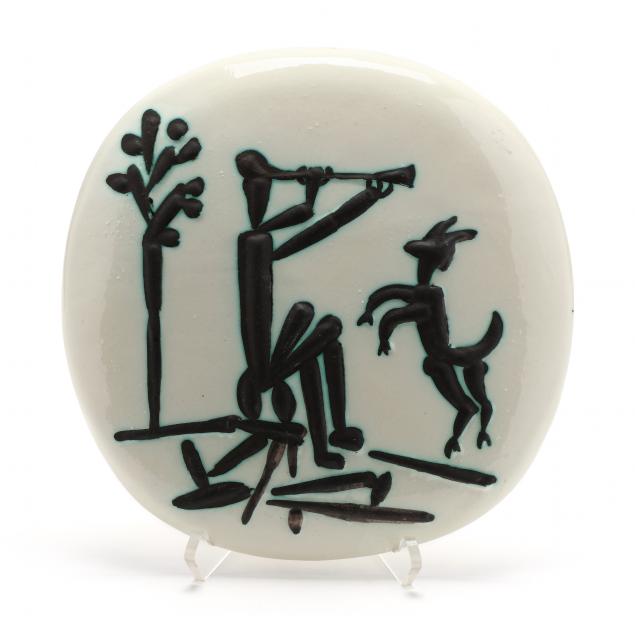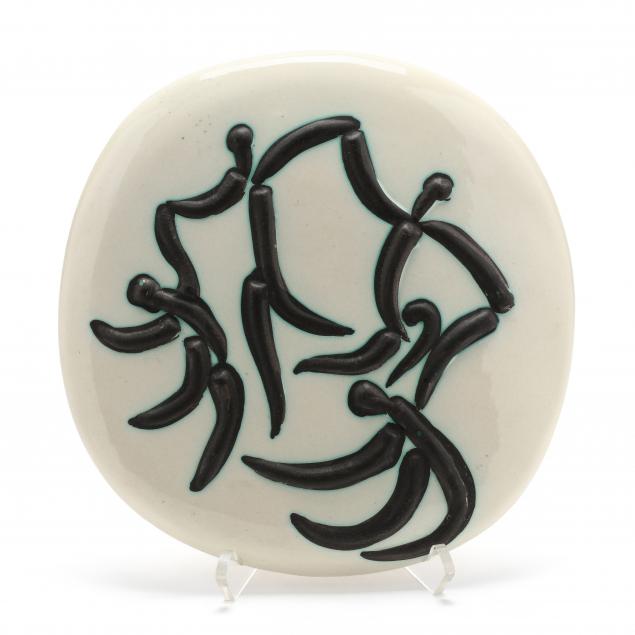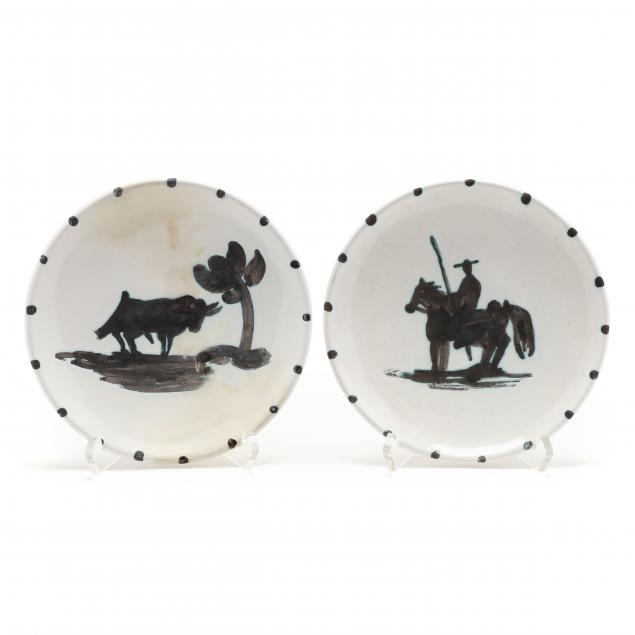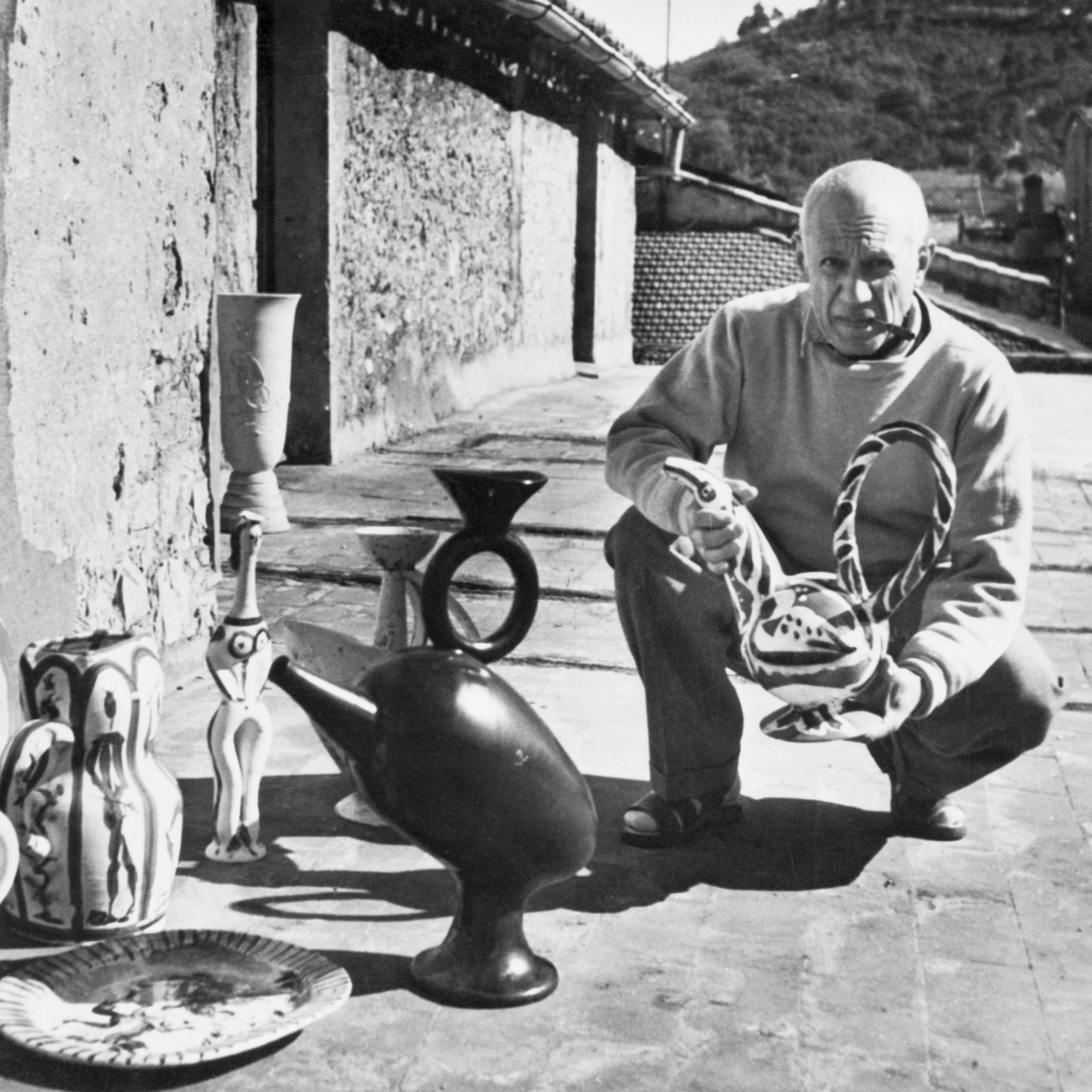
Ceramics: Picasso's Other Art Form
Artists, as a rule, don't like to be boxed in. The desire for unfettered creative self-realization comes with the artistic territory. A long list of household-name artists have had a creative side-hustle, such as the ceramics of Pablo Picasso. In our Signature Spring Auction on Saturday, March 13th, we are offering five lots of Picasso's ceramics.
Leland Little Prints & Multiples Director Lauren Sanford notes that "as with his prints, Picasso created these ceramic multiples as a way to make his artwork accessible to a broader audience. We love having the opportunity to offer beautiful 'multiples' like these at auction. While so many editioned works are on paper, multiples - which are 3-dimensional objects that have been multiplied - are a special component of the department."
Another fine example of the 'Multiples' category that came through our gallery in recent years was a complete set of Alexander Calder's Bicentennial Tapestries. Calder collaborated with the famed French weavers of Aubusson on a number of tapestries towards the end of his career, including this series of commemorative works. The set was offered individually in our auction, and one of the tapestries, titled La Poire, Le Fromage, et Le Serpent, sold for $15,000 (USD), an international auction record for a single Calder Bicentennial Tapestry.
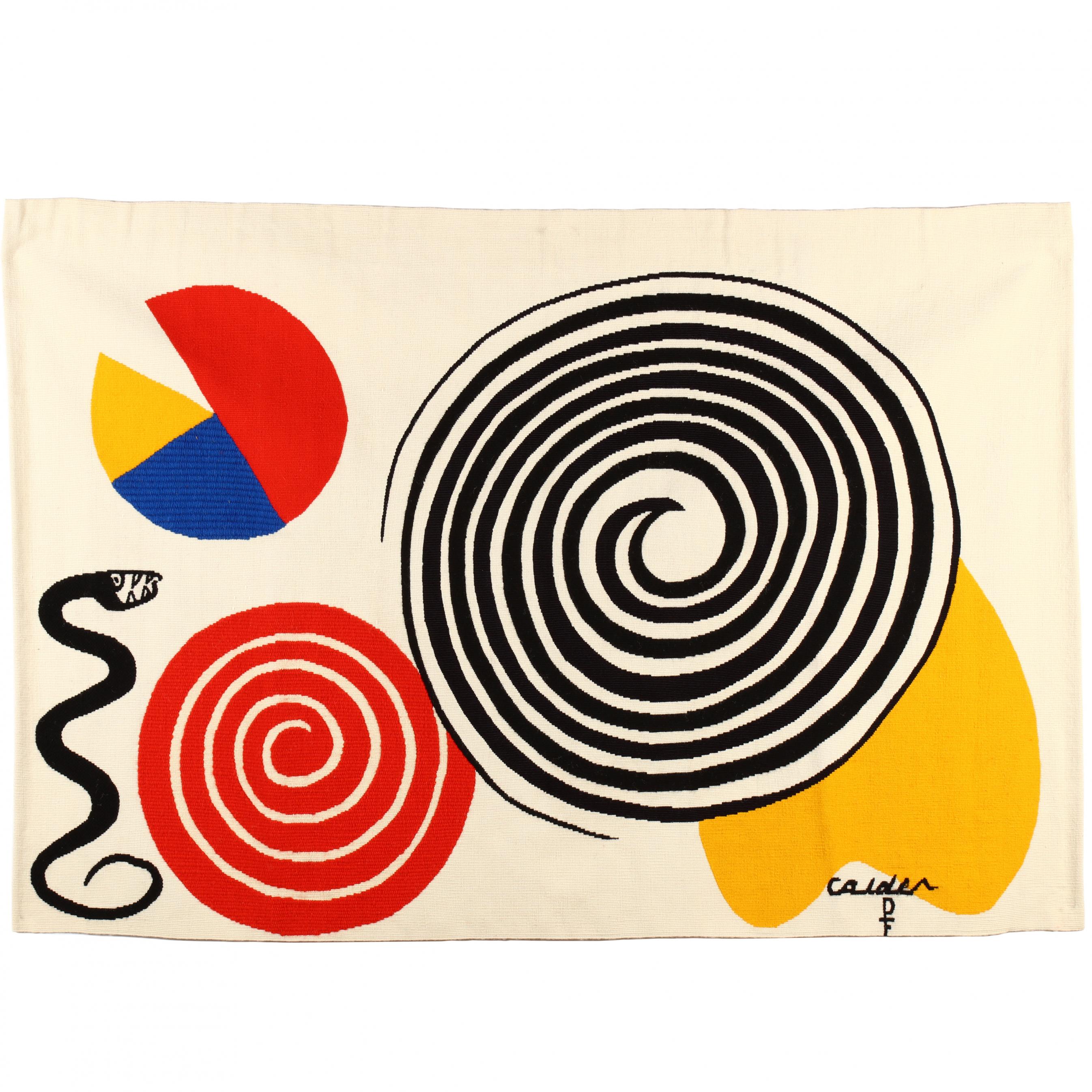
Alexander Calder (American, 1898-1976), La Poire, Le Fromage, et Le Serpent (The Pear, The Cheese, and The Serpent), from The Bicentennial Tapestries
For Picasso, forming and painting ceramics offered a respite from the intensity of painting. He began working with clay in the 1940's, after the husband and wife behind Madoura pottery invited him into their studio, in Vallauris, in the south of France, to work. It was at the Madoura factory that Picasso met Jacqueline Roque, who he would marry in 1963 and be married to until he passed away (notable for a man with as stormy and prolific a love life as Picasso's).
Picasso was in good company with other famous 20th century artists who found ceramics a worthwhile secondary pursuit. Joan Miró had a decades-long collaboration with the Spanish potter Josep Llorens Artigas, and then after Artigas's death, with his son Joan Gardy. The pieces produced by Miró and Artigas often bore two signatures and dates - Artigas's from the date of the initial firing, and Miró's with the date of his painting the piece with enamel. Thomas Hart Benton, one of the pioneers of American Regionalism, painted ceramics during the Great Depression because he found that they sold more easily than paintings. Later in Benton's career, when he became teacher and mentor to a young Jackson Pollock, he coached Pollock through one of his periods of mental distress and creative block by suggesting Pollock paint ceramics rather than attempt full-scale paintings.
Picasso was in good company with other famous 20th century artists who found ceramics a worthwhile secondary pursuit. Joan Miró had a decades-long collaboration with the Spanish potter Josep Llorens Artigas, and then after Artigas's death, with his son Joan Gardy. The pieces produced by Miró and Artigas often bore two signatures and dates - Artigas's from the date of the initial firing, and Miró's with the date of his painting the piece with enamel. Thomas Hart Benton, one of the pioneers of American Regionalism, painted ceramics during the Great Depression because he found that they sold more easily than paintings. Later in Benton's career, when he became teacher and mentor to a young Jackson Pollock, he coached Pollock through one of his periods of mental distress and creative block by suggesting Pollock paint ceramics rather than attempt full-scale paintings.
The selection of Picasso's ceramics in The Signature Spring Auction are pictured below. They comprise a representative range of the types of pieces Picasso made from clay, and a lighter, more playful side of the famed artist's ouevre.
The Signature Spring Auction
View Results
Saturday, March 13th
9:00am (EST)
The Signature Spring Auction
View Results
Saturday, March 13th
9:00am (EST)


